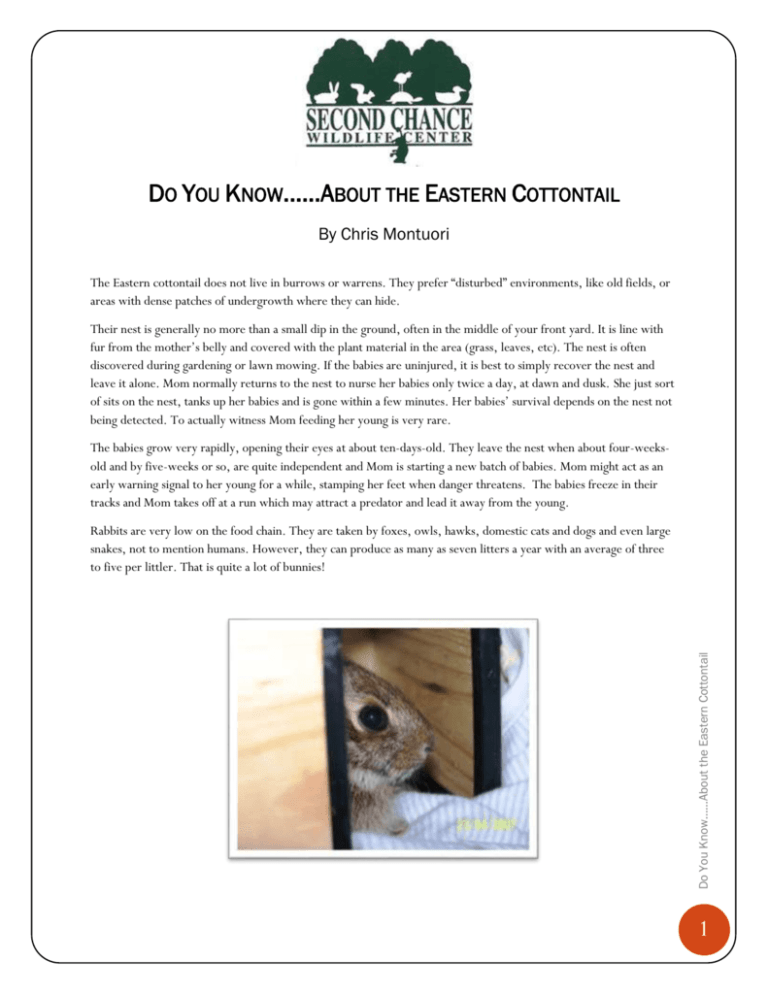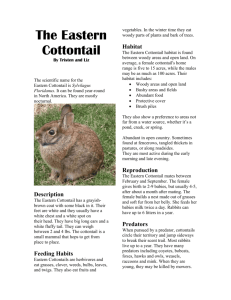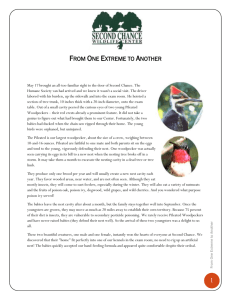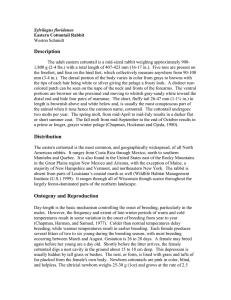Do You Know**About the Eastern Cottontail
advertisement

DO YOU KNOW……ABOUT THE EASTERN COTTONTAIL By Chris Montuori The Eastern cottontail does not live in burrows or warrens. They prefer “disturbed” environments, like old fields, or areas with dense patches of undergrowth where they can hide. Their nest is generally no more than a small dip in the ground, often in the middle of your front yard. It is line with fur from the mother’s belly and covered with the plant material in the area (grass, leaves, etc). The nest is often discovered during gardening or lawn mowing. If the babies are uninjured, it is best to simply recover the nest and leave it alone. Mom normally returns to the nest to nurse her babies only twice a day, at dawn and dusk. She just sort of sits on the nest, tanks up her babies and is gone within a few minutes. Her babies’ survival depends on the nest not being detected. To actually witness Mom feeding her young is very rare. The babies grow very rapidly, opening their eyes at about ten-days-old. They leave the nest when about four-weeksold and by five-weeks or so, are quite independent and Mom is starting a new batch of babies. Mom might act as an early warning signal to her young for a while, stamping her feet when danger threatens. The babies freeze in their tracks and Mom takes off at a run which may attract a predator and lead it away from the young. Do You Know……About the Eastern Cottontail Rabbits are very low on the food chain. They are taken by foxes, owls, hawks, domestic cats and dogs and even large snakes, not to mention humans. However, they can produce as many as seven litters a year with an average of three to five per littler. That is quite a lot of bunnies! 1 Do You Know……About the Eastern Cottontail Reprinted from "Second Thoughts" newsletter – October 1995. Copyright 1995 - Second Chance Wildlife Center, Inc. 2











